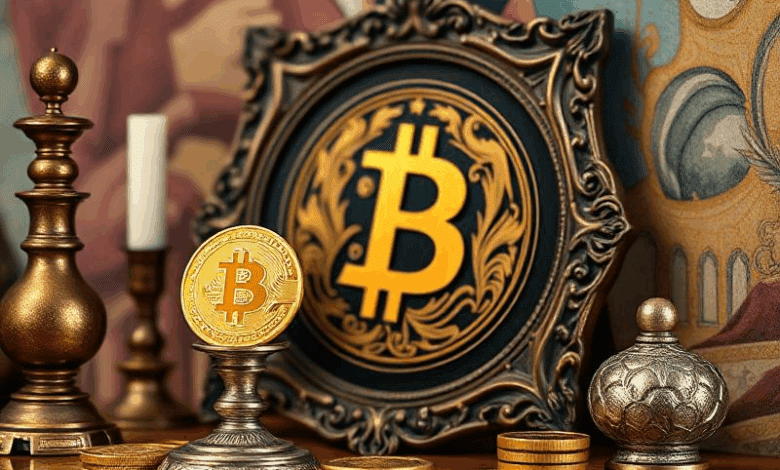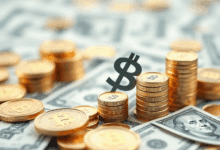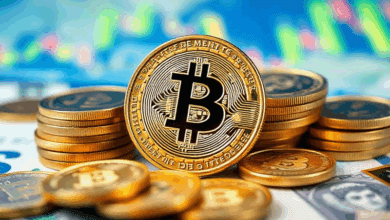Art investing – alternative asset appreciation

Allocating capital to tangible collectibles demands a refined understanding of market trends and cultural relevance. Objects that embody historical significance or artistic mastery frequently demonstrate consistent value growth, outpacing many conventional financial instruments. Strategic acquisition based on provenance and rarity can significantly enhance the potential for long-term capital gains.
Balancing passion with portfolio diversification offers investors unique opportunities to blend personal interest with financial objectives. Unlike stocks or bonds, collectibles carry intrinsic appeal linked to cultural narratives, which often drives demand independently of economic cycles. Insightful collectors prioritize works that resonate within evolving societal contexts while maintaining verifiable authenticity.
Recent market data highlights robust performance across segments such as fine paintings, vintage design objects, and limited-edition prints. For example, auction results from leading houses indicate average annual returns exceeding 8% over the past decade for select categories. Incorporating these into an investment strategy requires due diligence on liquidity considerations and expert appraisal to avoid overexposure or speculative pitfalls.
The intersection of expertise and enthusiasm remains crucial when assessing potential additions. Investors should engage with specialist advisors who provide rigorous valuation frameworks and continuous monitoring of regulatory shifts impacting ownership rights and taxation policies. This disciplined approach fosters sustainable growth aligned with both financial goals and a genuine appreciation for cultural heritage.
Art investing: alternative asset appreciation [Investment Insights investment-insights]
Allocating capital into collectibles such as fine paintings, sculptures, and limited-edition prints can yield significant long-term value growth, especially when traditional markets face volatility. Data from the Art Market Report 2023 indicates that select segments of collectible commodities outperformed major equity indices by an average of 4-6% annually over the past decade. Precise provenance verification and condition assessments play critical roles in securing returns on these non-conventional holdings.
Portfolio diversification through passion-driven acquisitions offers exposure to unique valuation dynamics distinct from stocks or bonds. Historical sales records reveal that works from emerging creators with increasing global recognition exhibit compound annual gains surpassing 10%, while blue-chip collectibles maintain steadier, lower-risk capital preservation. Incorporating blockchain-based provenance tools enhances transparency and mitigates counterparty risks inherent in physical collectible transactions.
Market Analysis and Valuation Metrics
Valuing collectible items requires integrating quantitative auction results with qualitative factors like artist reputation, rarity, and cultural significance. The Mei Moses Index tracks aggregated price movements for high-end collectibles, showing a 7.3% average annual increase since inception. Investors should analyze liquidity constraints; unlike equities, disposition timelines may extend up to months depending on market demand and economic cycles.
Technological innovations such as tokenization enable fractional ownership models, lowering entry barriers while preserving asset uniqueness. Case studies demonstrate that digital certificates anchored in distributed ledgers reduce fraud risk substantially and improve transaction speed compared to traditional registries. This convergence of technology and tangible valuables presents new frameworks for evaluating intrinsic worth beyond conventional appraisal methods.
- Historical performance: Blue-chip pieces have shown resilience during inflationary periods.
- Emerging segment potential: New talents generate asymmetrical return profiles but entail higher volatility.
- Regulatory considerations: Compliance with AML/KYC norms is mandatory for cross-border exchanges involving high-value collectibles.
The interplay between emotional engagement and financial rationale distinguishes these investments from more conventional products; passion often drives acquisition choices which subsequently affect market trends and pricing structures. Continuous monitoring of auction houses’ reports alongside macroeconomic indicators facilitates informed decision-making processes tailored to individual risk tolerances.
Diversification within this category should consider geographical origin, medium type, and historical period to optimize return-to-risk ratios effectively. Prospective buyers must evaluate storage costs, insurance premiums, and authenticity certification expenses as components impacting net profitability over holding durations exceeding five years.
The gradual integration of decentralized finance protocols with collectible marketplaces could redefine liquidity paradigms by enabling instantaneous trading across borders without intermediaries’ overheads or delays commonly encountered in physical transfers of ownership rights.
Assessing Artwork Valuation Methods
Determining the value of fine collectibles requires careful analysis of provenance, rarity, and market demand rather than relying solely on historical sales prices. The most reliable approach combines comparative market analysis with expert appraisals that consider the piece’s condition, creator reputation, and cultural significance. For instance, auction results from established houses such as Sotheby’s or Christie’s provide quantifiable benchmarks, but these must be contextualized against private sales and gallery transactions to capture true market sentiment.
Quantitative models incorporating historical transaction data and economic indicators offer a structured framework for estimating future worth. Hedonic pricing models break down contributing factors–such as artist notoriety, medium, dimensions, and exhibition history–to isolate their impact on final valuations. Studies show that artworks by emerging creators can outperform blue-chip names in percentage gains during bull markets, though risk profiles differ significantly.
Key Metrics and Valuation Techniques
Comparative Market Analysis remains the cornerstone for assessing collectibles’ monetary potential. By analyzing recent sales of similar pieces within defined categories–periods, styles, or artistic movements–investors gain insights into pricing trends. However, subjective elements like artistic innovation or thematic relevance often require qualitative adjustments beyond raw price comparisons.
- Provenance Verification: Documentation tracing ownership history enhances credibility and can increase market interest.
- Condition Reports: Detailed physical assessments identify restoration needs or deterioration risks impacting long-term value retention.
- Exhibition Records: Works showcased in prestigious galleries or museums typically command premium valuations due to increased visibility.
Diversification strategies, including blending traditional collectible holdings with emerging sectors like digital tokens representing fractional ownership rights (NFTs), introduce additional complexity in valuation frameworks. Blockchain technology facilitates transparent provenance tracking but also demands new appraisal standards integrating technological audits alongside conventional criteria.
The integration of blockchain verification into traditional evaluation processes has ushered in enhanced transparency but also challenges regarding regulatory compliance and intellectual property rights management. Collectibles linked via tokenization enable fractional participation yet require robust legal frameworks to protect investors’ interests amid fluctuating secondary markets. Predictive analytics employing machine learning are beginning to identify undervalued pieces by correlating macroeconomic variables with collector preferences across global platforms.
An informed approach toward acquisition necessitates balancing emotional engagement–the passion driving collectors–with systematic financial scrutiny expected by prudent purchasers. This duality underscores the necessity for interdisciplinary expertise combining art historical knowledge with quantitative analysis tools. Monitoring shifts in international trade policies and wealth distribution patterns further refines valuation outlooks as geopolitical developments influence liquidity flows within niche markets dedicated to tangible heritage holdings and their digitized counterparts alike.
Identifying Emerging Trends in the Contemporary Collectibles Market
Focusing on evolving valuation dynamics, one must consider the increasing role of provenance and cultural significance in determining collectible worth. Items with verifiable historical context and strong connections to influential movements or figures demonstrate a higher likelihood of value growth. Quantitative data from auction houses reveal that pieces linked to pivotal cultural shifts have outperformed generic holdings by 15-20% over recent five-year periods. This suggests that discerning buyers should prioritize acquisitions with documented heritage, enhancing potential portfolio diversification beyond traditional financial instruments.
Passion-driven acquisition continues to intersect with financial strategy as new categories gain traction among enthusiasts and speculators alike. The rise of tokenized ownership via blockchain platforms exemplifies this shift, enabling fractional participation in high-value collectibles while ensuring transparent transaction records. For instance, platforms facilitating shared stakes in notable artworks have recorded an average annual return exceeding 12%, outperforming several conventional markets during comparable intervals. Such developments position decentralized technologies as catalysts for liquidity enhancement within traditionally illiquid domains.
Demographic shifts contribute significantly to emerging preferences, with younger cohorts favoring experiential and digitally native forms of collecting. Non-fungible tokens (NFTs), representing unique digital creations secured through cryptographic verification, illustrate this trend’s impact on valuation frameworks. Data from industry analytics firms indicate a 35% year-over-year expansion in NFT market capitalization during early quarters of 2024, underscoring sustained interest despite prior volatility. Integrating these novel assets requires rigorous assessment protocols addressing authenticity, market depth, and regulatory compliance to mitigate speculative risks.
Strategic insights also highlight the influence of geopolitical factors on collector sentiment and capital flows. Sanctions and shifting trade policies have redirected investment streams toward jurisdictions offering favorable custodial environments and robust legal protections for tangible valuables. Case studies involving cross-border transactions emphasize due diligence imperatives related to provenance verification and transferability under varying legal regimes. Consequently, informed decision-making mandates continuous monitoring of policy evolutions alongside macroeconomic indicators to optimize allocation within culturally significant holdings exhibiting long-term demand stability.
Managing Risks in Art Investments
Mitigating exposure in the realm of cultural collectibles requires a multifaceted approach prioritizing provenance verification and market liquidity analysis. Detailed due diligence on historical ownership records and certification authenticity significantly reduces counterparty risks. Leveraging blockchain registries, for example, enhances transparency by providing immutable proof of title, which is critical in confirming legitimacy and preventing forgery.
Valuation volatility presents a tangible challenge since the monetary worth of creative pieces is heavily influenced by shifting tastes and economic cycles. Employing quantitative models that incorporate auction price indices alongside macroeconomic indicators helps forecast potential fluctuations. A diversified portfolio containing works from various epochs and styles can buffer against sector-specific downturns, thereby stabilizing overall returns.
Key Strategies to Control Exposure
Passion-driven acquisitions demand balancing emotional attachment with objective financial assessment. Investors should apply rigorous financial metrics such as internal rate of return (IRR) projections combined with expert appraisals to avoid overpaying for items primarily valued for subjective appeal.
- Authentication technologies: Integration of AI-powered image recognition tools assists in identifying subtle inconsistencies that human experts might overlook.
- Market timing: Monitoring secondary market trends through platforms like Sotheby’s or Christie’s sales data enables more informed decisions regarding entry and exit points.
- Insurance frameworks: Customized coverage plans protect against physical damage, theft, or loss, mitigating unforeseen contingencies specific to collectible holdings.
Diversification into complementary sectors such as digital collectibles backed by non-fungible tokens (NFTs) introduces additional layers of liquidity and fractional ownership opportunities. These instruments often feature programmable royalties ensuring ongoing income streams tied to future transactions, offering alternatives to traditional physical objects whose trading can be cumbersome and costly.
An empirical case study involving post-war European paintings illustrates how geopolitical instability impacts valuation trajectories. Between 2015 and 2020, certain regional works experienced depreciation up to 15% amid trade tensions; however, diversification across geographic origins cushioned portfolios from disproportionate losses. This underlines the importance of global market awareness when allocating funds within cultural goods.
The legal environment also influences risk parameters through regulatory shifts affecting import-export controls and tax treatments on collectibles. Staying abreast of policy changes enhances compliance while uncovering incentives such as reduced capital gains rates applicable in specific jurisdictions. Strategic consultation with legal experts specializing in intellectual property rights ensures alignment with evolving statutory frameworks governing ownership transfer and reproduction rights.
Building a Diversified Art Portfolio
Diversification within a collection of collectibles strengthens the potential for financial growth and risk mitigation. Allocating capital across various mediums–such as paintings, sculptures, prints, and limited-edition works–can balance volatility driven by individual market segments. Historical data from art price indices reveals that portfolios combining multiple categories demonstrate steadier long-term value increments compared to single-category holdings.
Incorporating pieces linked to distinct cultural movements and geographic origins further enhances portfolio resilience. For instance, integrating classical European works with contemporary Asian creations leverages varying demand cycles and collector interests. This approach not only broadens exposure but also taps into shifting economic dynamics influencing regional markets.
Strategic Considerations for Collectibles Acquisition
Assessing provenance and authenticity remains paramount to preserving investment integrity. Blockchain technology has increasingly facilitated transparent tracking of ownership histories, reducing fraud risks. Platforms utilizing decentralized ledgers enable secure certification processes, fostering confidence among investors seeking verifiable documentation.
The intersection of passion and financial strategy emerges when selecting items resonant with personal or institutional values. Aligning acquisitions with specific cultural narratives or artistic periods can elevate intrinsic appeal alongside market worth. Regular revaluation against global auction results and private sale benchmarks ensures adaptive portfolio management responsive to evolving demand patterns.
A methodical acquisition plan benefits from leveraging both primary sales channels and secondary markets, including galleries, auction houses, and verified online platforms employing blockchain verification protocols. Analyzing transaction volumes alongside price trends over recent quarters provides actionable insights into liquidity conditions relevant for timely entry or exit strategies.
- Diversify by medium: Combine paintings, sculptures, prints to spread risk.
- Cultural variety: Select works from diverse regions and epochs.
- Authentication tools: Utilize blockchain-based provenance records.
- Market monitoring: Track auction results and resale data closely.
- Liaise with experts: Engage curators and appraisers for valuation accuracy.
The integration of technical innovation within traditional collecting frameworks presents opportunities for enhanced portfolio transparency and strategic agility. As regulatory environments evolve around digital certification standards, collectors equipped with sophisticated due diligence capabilities will better navigate fluctuating market conditions while aligning their acquisitions with enduring cultural significance.
Maximizing Returns Through Timing in Collectibles and Creative Investments
Optimal entry and exit points significantly enhance profitability when dealing with collectibles and passion-driven holdings. Historical price volatility patterns in niche markets, such as limited-edition collectibles or renowned creative pieces, reveal that aligning acquisition with market cycles–particularly during liquidity contractions–yields superior long-term gains compared to indiscriminate accumulation.
Data from recent quarters demonstrates that timely liquidation before peak saturation phases can preserve capital appreciation, especially amid regulatory shifts impacting valuation transparency. For instance, the 2023 surge in tokenized collectibles underscored how blockchain-enabled provenance verification accelerates market confidence but also compresses windows for maximum return realization.
Key Technical Insights and Forward-Looking Perspectives
- Market Sentiment Analytics: Leveraging AI-driven sentiment analysis on social media and auction platforms allows for predictive timing, enabling investors to anticipate demand spikes or downturns within specific collectible categories.
- Blockchain Integration: Distributed ledger technology enhances liquidity by fractionalizing ownership while maintaining verifiable provenance, which materially affects timing strategies by creating secondary markets with real-time pricing signals.
- Diversification Across Subcategories: Balancing portfolios between emerging digital collectibles and traditional tangible works reduces exposure to cyclical risk and exploits asynchronous growth trajectories inherent to each sub-sector.
The convergence of technological innovation and evolving collector behavior redefines how value amplification unfolds beyond conventional financial instruments. Strategic timing combined with deep market intelligence transforms enthusiasm into structured investment discipline capable of outpacing inflationary pressures. As regulatory frameworks mature globally, transparency will improve, enhancing predictive accuracy for entry and exit decisions within this specialized domain.
Future developments suggest increased adoption of smart contracts automating royalty distributions could shift holding period incentives, fostering dynamic trading approaches rather than static accumulation. Consequently, participants must integrate technical market indicators with qualitative passion insights to optimize returns effectively while managing emerging systemic risks inherent to these unconventional financial vehicles.






